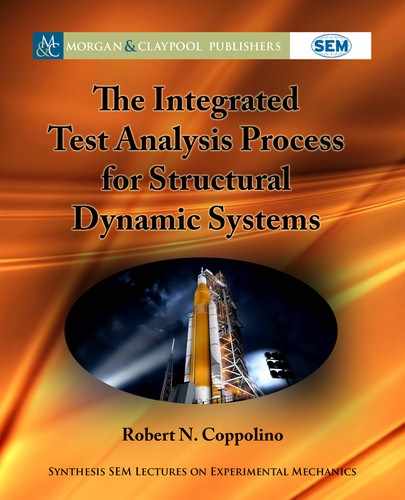
147
Author’s Biography
ROBERT N. COPPOLINO
Robert N. Coppolino received his formal education in New York City having graduated from
Stuyvesant High School and earned a B.S. Aerospace Engineering, and an M.S. and Ph.D. in
Applied Mechanics at the Polytechnic Institute of Brooklyn. As a structural dynamics engineer
at Grumman Aerospace Corporation (1967–1975), he supported the Lunar Module, Skylab,
and Space Shuttle programs, and contributed to development of techniques for launch vehicle
pogo (instability) suppression and propellant tank hydroelastic modeling and test-analysis corre-
lation. From 1975–1983, Dr. Coppolino was at e Aerospace Corporation, ultimately holding
the post of manager of the Engineering Dynamics Section. While at Aerospace, he supported
NASA’s Space Shuttle Pogo Integration Panel, developed the Simultaneous Frequency Domain
(SFD) method for experimental modal analysis, and defined innovative residual vector tech-
niques the were successfully employed in Space Shuttle nonlinear payload interface flight loads
predictions and detection of structural damage on offshore jacket platforms. From 1983–1987,
he served as manager of the Advanced Methods and Development branch at the MacNeal–
Schwendler Corporation (MSC). During his stay at MSC he led a consortium composed of
MSC, the J. S. Bendat Company, and Synergistic Technology Incorporated, which developed
technologies that were ultimately called the Integrated Test Analysis Process (ITAP). From 1987
to the present, Dr. Coppolino has held various senior posts at Measurement Analysis Corpora-
tion, currently serving as Chief Technology Officer for Torrance Operations. During this period
he collaborated closely with the late Julius S. Bendat on development of nonlinear spectral tech-
niques for identification of nonlinear systems. In addition, Dr. Coppolino continued develop-
ment of ITAP components including efficient procedures for modal test-analysis reconciliation.
e full suite of ITAP capabilities experienced its first end-to-end, “prime-time” application
on the International Space Station P5 Short Spacer modal test, conducted at NASA/MSFC
in 2001.
In 2016, Dr. Coppolino was invited to join the NASA Engineering Safety Center, Loads
and Dynamics Technical Discipline Team (LDTDT) as an industry member. Since that time, he
has provided independent review of NASA’s SLS and Orion programs, and as part of this work
developed procedures aimed at dealing with the “many modes” problem. A highlight of these
activities is development of SFD-2018, which appears to provide the impetus for a Roadmap
for a Highly Improved Modal Test Process.
..................Content has been hidden....................
You can't read the all page of ebook, please click here login for view all page.
